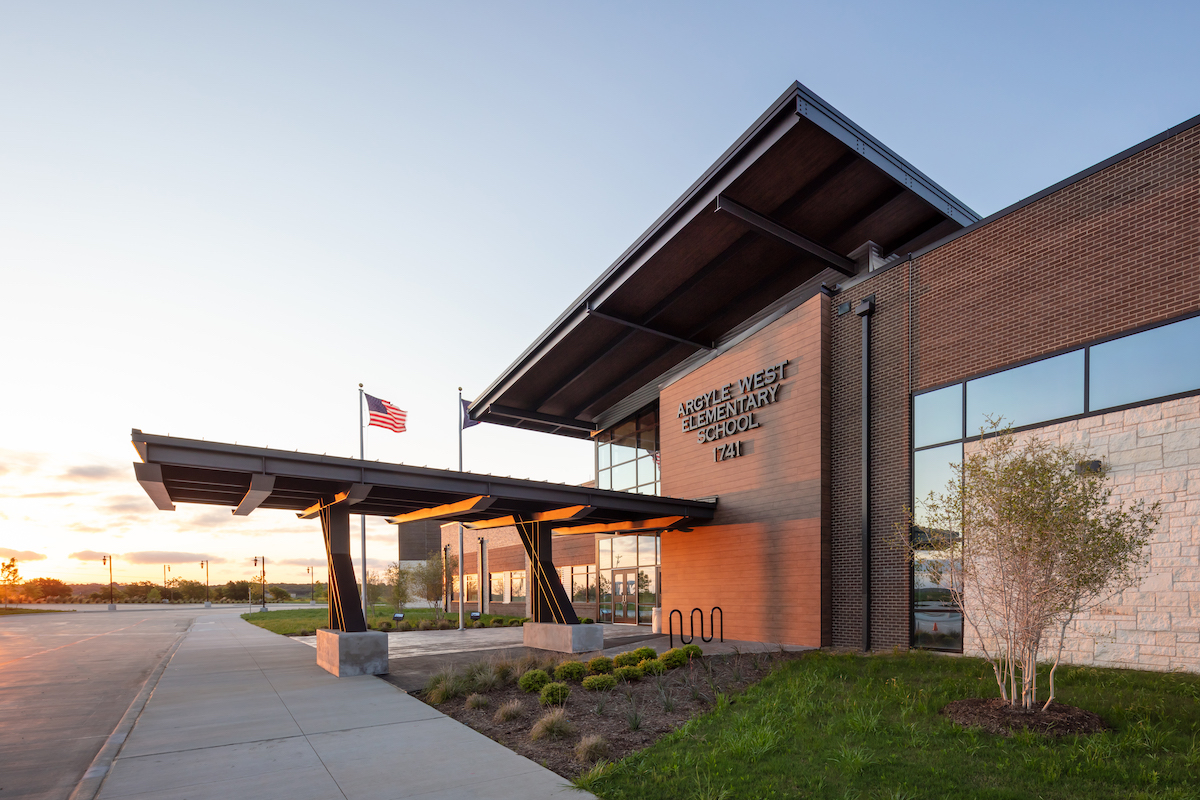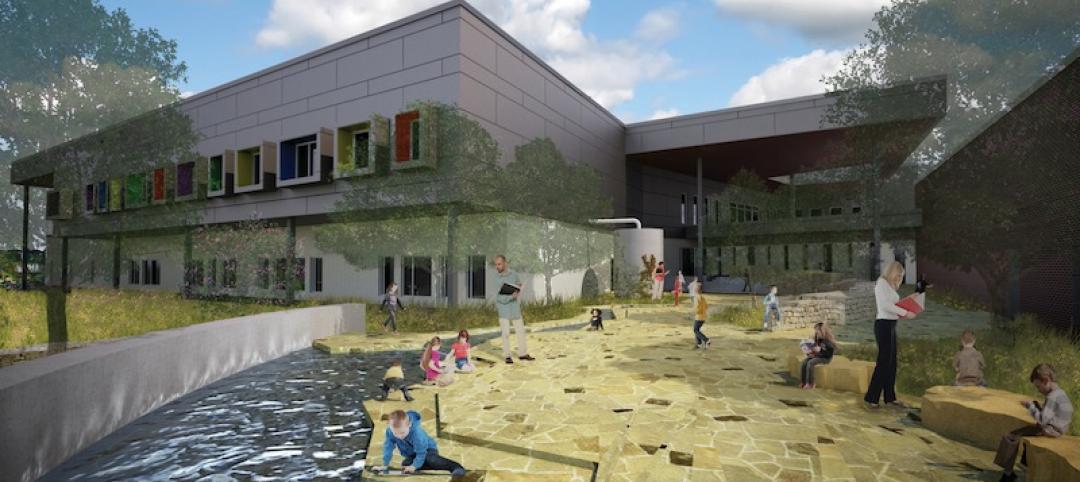K-12 schools in Mississippi began reopening in late July. By August 13, 39 counties—half of that state’s total—had schools reporting positive coronavirus cases that included 109 teachers and 69 students. More than 250 teachers and staff and 489 students were quarantined. On August 17, Gov. Tate Reeves announced COVID-19 testing for all teachers and emergency telehealth coverage for schools.
Also being tested, in Mississippi and elsewhere across the nation, are the decisions that school districts made about social distancing, sanitization, and online learning to present environments where students and teachers can feel safe.
“Right now, we’re holding our breath, to some degree,” says Dan Davis, Senior Vice President with CG Schmidt, the Milwaukee, Wis.-based construction company. “This pandemic really showed us how ill-prepared we were to face this kind of situation. Unfortunately, we don’t think anyone can really say with confidence that they have a good picture of the long-term effects of the pandemic on the market.”
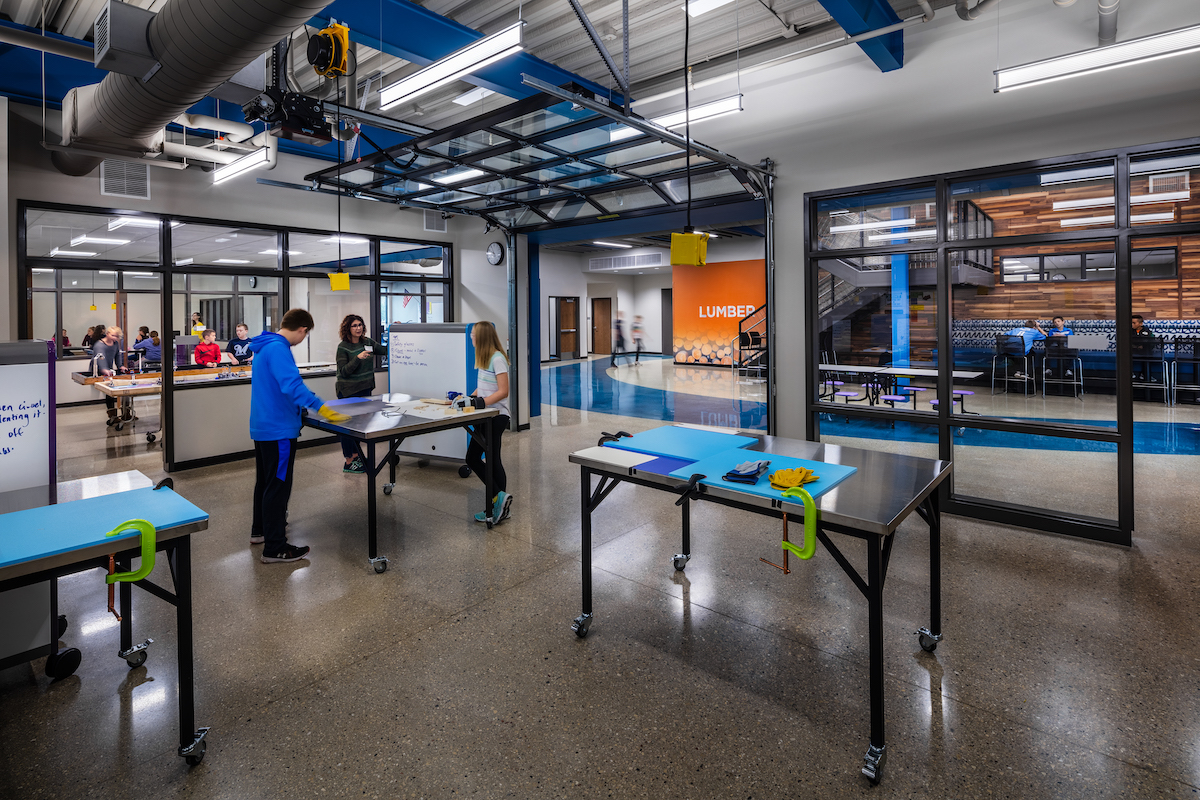
The $30.9 million Sheboygan Falls (Wis.) Middle School replaced a building that was more than a century old. Its design, by EUA Architects, focuses on the concept of a “Learning River” that winds its way through the school, and leads to each of the grade “villages” representing the area’s identifying elements: falls, river, mills, and lumber. CG Schmidt was the contractor. Photo courtesy EUA
The K-12 sector has been somewhat less affected by the virus in terms of project delays or postponements, say AEC sources. What’s different, however, is “that everything is constantly changing,” says Steve Hulsey, President of Corgan. “The urgency of the pandemic highlighted the need for schools to consider gaps in agility, and opportunities to improve response procedures.”
Hulsey, echoing other AEC execs, adds that COVID-19 “has reinforced the fundamental need for human interaction, collaboration, and the learning that happens through in-person experiences and groups.” Jim French, FAIA, Senior Principal and Global K-12 Education Practice Leader for DLR Group, believes the pandemic can be a “catalyst for positive change” that leads to showing that “learning can happen anywhere.”
Altering K-12 school construction plans
There were some immediate changes that schools made in order to reopen for the fall semester. These included HVAC upgrades, installing indirect UV lighting, and modifying classrooms, says Susan Tully, LEED AP BD+C, Senior Project Manager at Gilbane Building Company. Learning spaces are flexible and adaptable. Some schools also focused on expanding their health and wellness suites.
“Our clients’ priorities are changing,” says Gil Fullen, Vice President of Business Development for Balfour Beatty’s California buildings team. School districts there are deferring projects like sports fields and asking instead for new infrastructure and modernization that support distance learning.
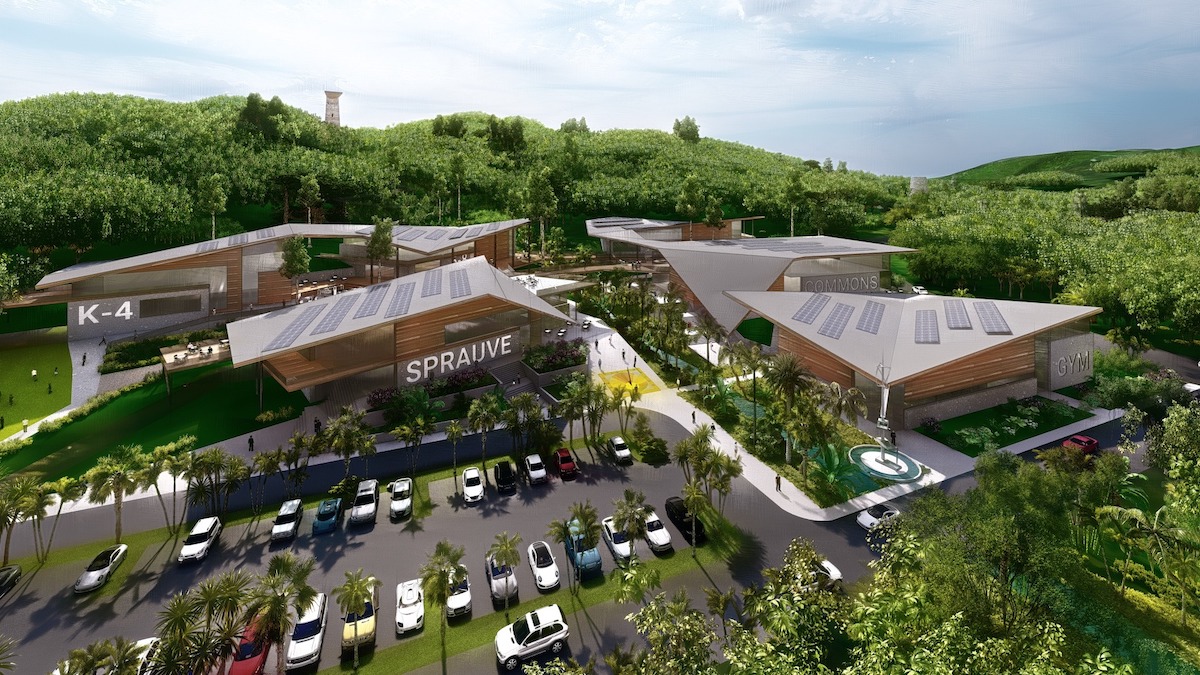
DLR Group recently completed an education facilities master plan for the U.S. Virgin Islands’ Department of Education, which oversees 10,000 students. The master plan called for the reduction of facilities to 18 from 32. Six schools will be constructed and 12 renovated or expanded by 2025. Shown is the Julius Sprauve school on St. John. Rendering: DLR Group
Huckabee, which specializes in education design, this summer was in the middle of bond planning for two high schools in the Wichita Falls, Texas, Independent School District. “The community has been very forward thinking in their design response, as they build on an existing platform of distance learning,” says Konrad Judd, AIA, LEED AP, RID, the firm’s Chief Design Officer. He elaborates that a hybrid model of instruction will require fewer classrooms and more common and collaborative spaces, with an emphasis on adaptability. “The design is less about a direct response to COVID-19 and more about a solution that supports long-term instructional and safety needs,” says Judd.
Corgan’s Hulsey adds that K-12 security concerns are now more “layered” and consider threats such as infectious diseases.
Involving the community in K-12 school design
AEC sources agree that technology in the form of enhanced IT and mechanical systems is now central to any school improvement or new construction. “Features that are ‘luxury’ now—like touchless faucets and toilet systems—will become a minimum standard for school facilities,” says Jake Nabholz, President of contractor Nabholz.
Fullen of Balfour Beatty says his firm has been using virtual and augmented reality and BIM tools to keep its K-12 jobsites safe and to share information with clients. Corgan’s Hulsey sees VR and AR technologies opening shared learning vistas for students and teachers.
‘This pandemic really showed us how ill-prepared we were to face this kind of situation.’
— Dan Davis, CG Schmidt
With the pandemic still lurking, the longer-term design and construction objectives of some K-12 school districts are shifting toward their facilities serving the greater community, say AEC sources. “The actual school facilities are now, more than previously, understood to be a place of shelter, service, and a public resource,” says Gilbane’s Tully.
DLR Group’s Principal Todd Ferking blogged recently about a “community-based learning model” that allows students to take greater advantage of public spaces, like libraries and fitness centers, as a means toward reducing the buildings inventory that school districts have to operate and maintain.
Integrating schools with their communities is a smart tactic when getting voters to approve funding for school construction and renovation has gotten harder. “If the economy worsens, voters may reject significant bond referendums that they would traditionally support,” cautions DLR Group’s French.
GC Schmidt’s Davis predicts that school boards will be hesitant to pursue mega referendums during the recession. “We aren’t going to see a lot of $100 million new high schools or athletic or performing arts centers until we have a better understanding as to the endgame for the virus.” Over the next 12 to 18 months, Davis believes that schools are more likely to take a “two-stage” approach that focuses first on disease control within their existing operating and maintenance budgets, and second on using new funding to upgrade HVAC and MEP systems. He adds that more districts are availing themselves of federal grants to purchase advanced technologies like modular ionization bars.
Huckabee’s Chief Operations Officer Tom Lueck projects a 25-30% drop in the education market this year. He says that many Texas school districts delayed their bonds by six to 12 months or more. “Without bond elections, school districts don’t have the capital for major construction projects.” Consequently, Huckabee’s focus, until there’s an economic rebound, “is helping clients realize their potential in existing spaces,” he says.
ALSO SEE: The rise of inquiry-based learning in K-12 communities
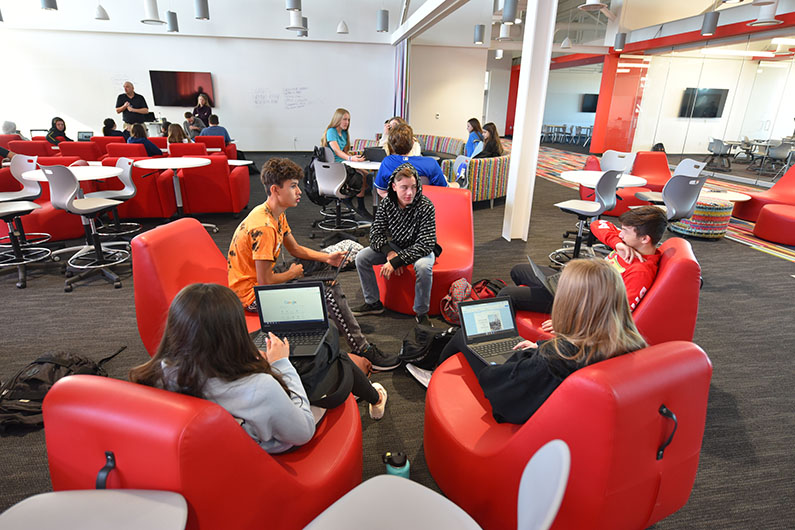
Inquiry-based education offers a methodology that does not rely solely on the educator being the lead in all learning, writes DLR Group's Emily Froese. Read the article.
Ken Hutchens, VLK Architects’ Principal and Chief Creative Officer, corroborates Lueck’s comments about bond election postponements in Texas. He also notes that many school districts accelerated projects to take advantage of lower construction costs. “Therefore, architecture firms are burning through backlogged work, with minimal work in the pipeline for 2021.”
Still, Hutchens is cautiously optimistic about VLK’s K-12 prospects, even while anticipating that bond referendums are likely to be more conservative. He notes that in some urban areas in Texas, single-family homebuilding is “brisk,” which ultimately could create the need for new school facilities.
Gilbane’s Tully observes, parenthetically, that more school districts are looking for alternate funding, such as public-private partnerships. And Nabholz has seen some districts favor energy performance contracts that potentially generate operational savings.
Nabholz notes, however, that the coronavirus, scarcer financing, and a recession aren’t the only factors holding back K-12 school construction and renovation. The U.S. birth rate increased by 0.09% in 2019, after falling four consecutive years to its lowest level in more than three decades. “Class sizes have peaked and are trending downward,” Nabholz observes. “This, more than the pandemic, will affect the future of K-12 education building.”
Related Stories
| Dec 17, 2013
IBM's five tech-driven innovation predictions for the next five years [infographics]
Smart classrooms, DNA-based medical care, and wired cities are among the technology-related innovations identified by IBM researchers for the company's 5 in 5 report.
| Dec 16, 2013
Irving, Texas building state’s second net-zero school
Lee Elementary School, scheduled to open in fall 2014, will be net-zero-ready, and if the school board decides to sell district bonds and allow the purchase of additional solar panels, will be a true net-zero facility.
| Dec 13, 2013
Safe and sound: 10 solutions for fire and life safety
From a dual fire-CO detector to an aspiration-sensing fire alarm, BD+C editors present a roundup of new fire and life safety products and technologies.
| Dec 10, 2013
16 great solutions for architects, engineers, and contractors
From a crowd-funded smart shovel to a why-didn’t-someone-do-this-sooner scheme for managing traffic in public restrooms, these ideas are noteworthy for creative problem-solving. Here are some of the most intriguing innovations the BD+C community has brought to our attention this year.
| Dec 5, 2013
Exclusive BD+C survey shows reaction to Sandy Hook tragedy
More than 60% of AEC professionals surveyed by BD+C said their firms experienced heightened interest in security measures from school districts they worked with.
| Nov 27, 2013
Wonder walls: 13 choices for the building envelope
BD+C editors present a roundup of the latest technologies and applications in exterior wall systems, from a tapered metal wall installation in Oklahoma to a textured precast concrete solution in North Carolina.
| Nov 26, 2013
Construction costs rise for 22nd straight month in November
Construction costs in North America rose for the 22nd consecutive month in November as labor costs continued to increase, amid growing industry concern over the tight availability of skilled workers.
| Nov 25, 2013
Building Teams need to help owners avoid 'operational stray'
"Operational stray" occurs when a building’s MEP systems don’t work the way they should. Even the most well-designed and constructed building can stray from perfection—and that can cost the owner a ton in unnecessary utility costs. But help is on the way.
| Nov 19, 2013
Top 10 green building products for 2014
Assa Abloy's power-over-ethernet access-control locks and Schüco's retrofit façade system are among the products to make BuildingGreen Inc.'s annual Top-10 Green Building Products list.
| Nov 18, 2013
ASSA ABLOY, CertainTeed team up to tackle classroom acoustics
The new alliance has uncovered easily accessible solutions to address these acoustical challenges and reduce the sound reverberation that further complicates noise issues.


